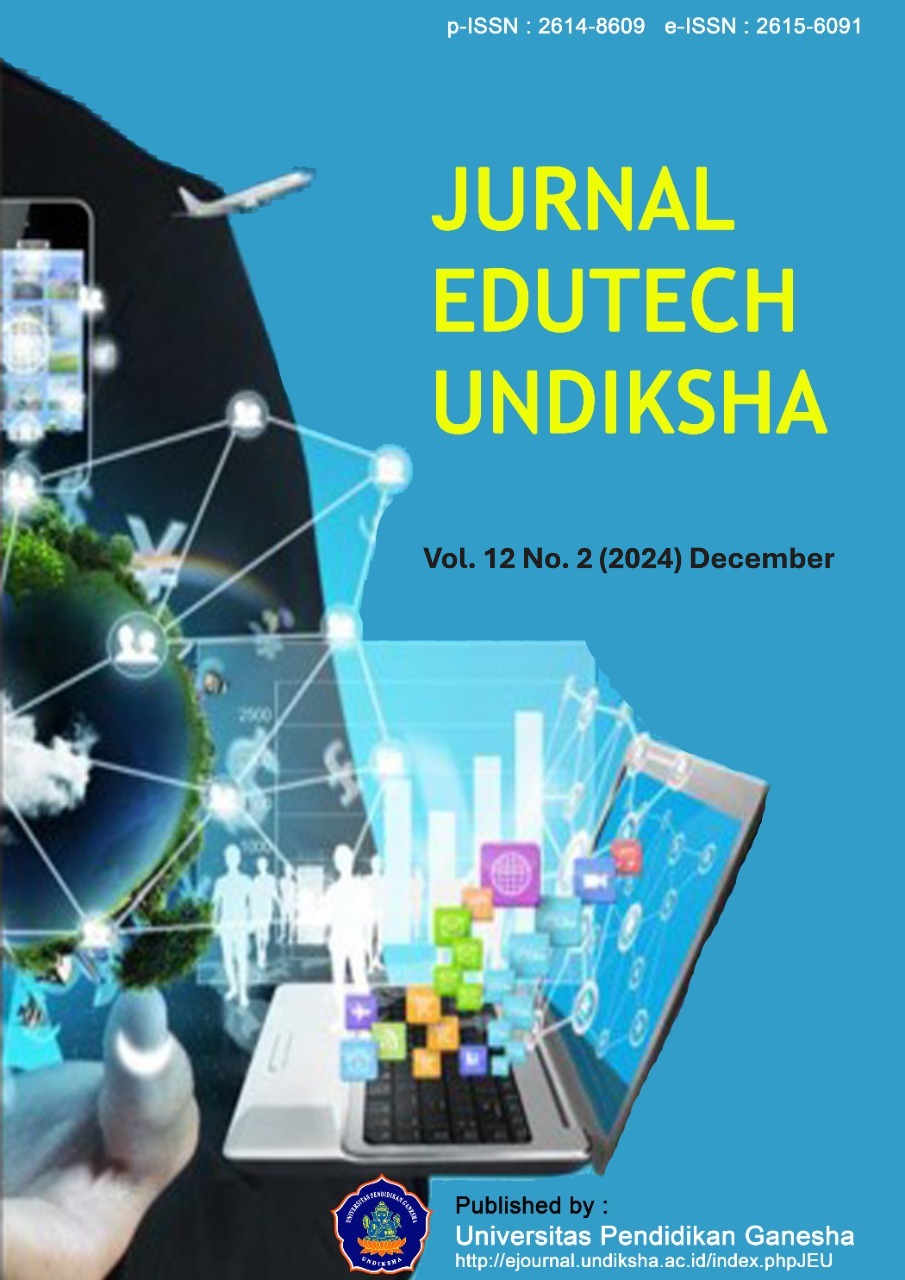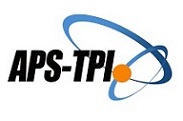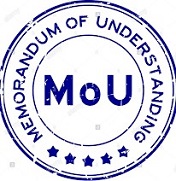Tridatu Responsive Inquiry Adaptive Navigation to Enhance Acid-Base Titration Understanding in Bali Schools
DOI:
https://doi.org/10.23887/jeu.v12i2.88273Keywords:
Tridatu Learning Model, Kirkpatrick Evaluation Model, Inquiry-Based LearningAbstract
Students' conceptual understanding of acid-base titration remains a challenge in high school science education. This study aims to assess the effectiveness of the TRIAN model in improving cognitive learning outcomes and user satisfaction. A mixed-methods approach was employed, involving 60 high school students in Bali as research participants. Quantitative data were collected through pre-tests and post-tests, while qualitative data were gathered through observations, interviews, and user feedback. The effectiveness evaluation was conducted using Kirkpatrick’s Evaluation Model, focusing on the Learning level to measure knowledge and skill improvements. The results indicated a 50% increase in students' conceptual understanding, with statistically significant improvements based on paired t-test analysis (p < 0.01). Additionally, findings from the User Experience Questionnaire (UEQ) revealed high satisfaction levels, particularly in the dimensions of attractiveness, stimulation, and efficiency. These findings suggest that the TRIAN model effectively enhances cognitive learning outcomes while integrating cultural values into the learning process. This study concludes that the TRIAN model, supported by TitraSee AR, offers a holistic and engaging approach to science education by bridging modern technology and local cultural traditions. Future research could explore the application of this model in various educational and cultural contexts.
References
Almuaqel, I. A. (2023). Virtual Reality and Inclusive Learning of Individuals With Intellectual and Developmental Disabilities: A Review of Findings and the Path Ahead. IEEE Transactions on Engineering Management. https://doi.org/10.1109/TEM.2023.3243530.
Arztmann, M., Dominguez Alfaro, J. L., Blattgerste, J., Jeuring, J., & Puyvelde, P. (2022). Marie’s ChemLab: A Mobile Augmented Reality Game to Teach Basic Chemistry to Children. In European Conference on Games Based Learning (Vol 16). https://doi.org/10.34190/ecgbl.16.1.518.
Atmadja, A. T., Ariyani, L. P. S., & Atmadja, N. B. (2017). Commodification of Tri Datu Bracelets Talisman in Balinese Community. Komunitas, 9(2), 246–254. https://doi.org/10.15294/komunitas.v9i2.8325.
Atmadja, N. B., Atmadja, A. T., & Ariyani, L. P. S. (2016). Ngaben di Krematorium pada Masyarakat Hindu di Bali: Perspektif McDonaldisasi dan Homo Complexus. Mozaik Humaniora, 16(2), 1–17. https://doi.org/http://dx.doi.org/10.20473/mozaik.v16i2.5862.
Benawan, I., Nugraheni, D. M. K., Noranita, B., & Aryotejo, G. (2023). Digital Education Game for TK-A Level Students Using Multimedia Development Life Cycle Method. INTENSIF: Jurnal Ilmiah Penelitian dan Penerapan Teknologi Sistem Informasi, 7(1), 68–83. https://doi.org/10.29407/intensif.v7i1.18671.
Carolina, Y. Dela. (2023). Augmented Reality sebagai Media Pembelajaran Interaktif 3D untuk Meningkatkan Motivasi Belajar Siswa Digital Native. Ideguru: Jurnal Karya Ilmiah Guru, 8(1), 10–16. https://doi.org/10.51169/ideguru.v8i1.448.
Cheng, Y., Lee, M.-H., Yang, C.-S., & Wu, P.-Y. (2024). Hands-on interaction in the augmented reality (AR) chemistry laboratories enhances the learning effects of low-achieving students: a pilot study. Interactive Technology and Smart Education, 21(1), 44–66. https://doi.org/10.1108/ITSE-04-2022-0045.
Devesh, S., & Nanjundaswamy, A. (2023). Cultivating a culture of inquiry: exploring the factors influencing the integration of research and teaching in higher education institutions. Journal of Applied Research in Higher Education, ahead-of-p(ahead-of-print). https://doi.org/10.1108/JARHE-06-2023-0227.
Engerman, J. A., & Otto, R. F. (2021). The shift to digital: designing for learning from a culturally relevant interactive media perspective. Educational Technology Research and Development, 69(1), 301–305.
Flick, U. (2022). An Introduction to Qualitative Research. SAGE Publications.
Fuad, M., Efendi, A., & Muhammad, U. A. (2020). The Use of Pepaccur Local Wisdom for Indonesian Literary Teaching Materials. JPI, 9(2), 213–223. https://doi.org/10.23887/jpi-undiksha.v9i2.22779.
Gasteiger, J. (2020). Chemistry in Times of Artificial Intelligence. ChemPhysChem, 21(20), 2233–2242. https://doi.org/10.1002/cphc.202000518.
Henim, S. R., & Sari, R. P. (2020). User Experience Evaluation of Student Academic Information System of Higher Education Using User Experience Questionnaire. Jurnal Komputer Terapan, 6(Vol. 6 No. 1 (2020)), 69–78. https://doi.org/10.35143/jkt.v6i1.3582.
Hidayat, H., Sukmawarti, S., & Suwanto, S. (2021). The application of augmented reality in elementary school education. Research, Society and Development, 10(3), e14910312823.
https://doi.org/10.33448/rsd-v10i3.12823.
Jin, Q., Yin, Y., Li, J., & Fan, Y. (2022). Study on Interactive and Highly Efficient 3D Reconstruction System. Proceedings - 2022 15th International Symposium on Computational Intelligence and Design, ISCID 2022, 249–253. https://doi.org/10.1109/ISCID56505.2022.00062.
Jones, K. A., & Sharma, R. S. (2021). Higher Education 4.0: The Digital Transformation of Classroom Lectures to Blended Learning. Springer Nature.
Juniantari, N. K. R., Pengguna, P., & Questionnaire, U. E. (2021). Analisis Sistem Informasi Dpmptsp Menggunakan Metode User Dpmptsp Information System Analysis Using the User Experience. 4(1), 31–37. https://doi.org/10.33387/jiko.
Kartini, K. S., & Putra, I. N. T. A. (2020). Respon Siswa Terhadap Pengembangan Media Pembelajaran Interaktif Berbasis Android. Jurnal Pendidikan Kimia Indonesia, 4(1), 12.
https://doi.org/10.23887/jpk.v4i1.24981.
Kaur, D. P., Mantri, A., & Horan, B. (2020). Enhancing student motivation with use of augmented reality for interactive learning in engineering education. Procedia Computer Science, 172(2019), 881–885. https://doi.org/10.1016/j.procs.2020.05.127.
Kempke, T., & Zeidler, J. (2023). Augmented Reality im Chemieanfangsunterricht. CHEMKON, 30(5), 205–211. https://doi.org/10.1002/ckon.202100076.
Kirkpatrick, J., & Kirkpatrick, W. (2021). An introduction to the new world Kirkpatrick model. Krikpatrick Partners, 1–12.
Krathwohl, D. R. (2021). An of Overview Bloom ’ s Taxonomy. ReVision, 41(4), 212–218.
Kulawansa, K., & Mihirani, W. A. M. (2019). Use of Augmented Reality for Learning Chemistry. Academia.Edu, 9(2).
Kusumayani, N. K. M., Wibawa, I. M. C., & Yudiana, K. (2019). Pengaruh Model Pembelajaran Kooperatif Talking Stick Bermuatan Tri Hita Karana Terhadap Kompetensi Pengetahuan Ipa Siswa Iv Sd. Jurnal Pendidikan Multikultural Indonesia, 2(2), 55. https://doi.org/10.23887/jpmu.v2i2.20805.
MacKenzie, A., Bacalja, A., Annamali, D., Panaretou, A., Girme, P., Cutajar, M., Abegglen, S., Evens, M., Neuhaus, F., Wilson, K., Psarikidou, K., Koole, M., Hrastinski, S., Sturm, S., Adachi, C., Schnaider, K., Bozkurt, A., Rapanta, C., Themelis, C., … Gourlay, L. (2022). Dissolving the Dichotomies Between Online and Campus-Based Teaching: a Collective Response to The Manifesto for Teaching Online (Bayne et al. 2020). Postdigital Science and Education, 4(2), 271–329. https://doi.org/10.1007/s42438-021-00259-z.
Mazzuco, A., Loureiro Krassmann, A., Reategui, E., & Salcedo Gomes, R. (2023). Augmented Reality in the Teaching and Learning Process of Chemistry: A Systematic Literature Review. Revista Debates em Ensino de Química, 9(1), 258–277. https://doi.org/10.53003/redequim.v9i1.4844.
McKenzie, S., Garivaldis, F., & Dyer, K. R. (2020). Tertiary Online Teaching and Learning (Vol 86). Springer.
Naidu, K. J., Sharma, S., Rai, V., & Baghela, V. S. (2023). AR in Education as Crystal Concept. 3–10. https://doi.org/10.4108/eai.24-3-2022.2319027.
Nechypurenko, P., Semerikov, S., & Pokhliestova, O. (2023). An augmented reality-based virtual chemistry laboratory to support educational and research activities of 11th grade students. Educational Dimension, 8. https://doi.org/10.31812/educdim.4446.
Ngazizah, N., & Laititia, T. (2022). Pengembangan Media Pembelajaran menggunakan Komik Berbasis Budaya Lokal untuk Penguatan Karakter Sesuai dengan Profil Pelajar Pancasila Jenjang SD. journal universitas pahlawan, 4(4). https://doi.org/10.31004/jpdk.v4i4.5446.
Prastya, C., Suja, I. W., & Sutajaya, W. (2022). Impelentasi Model Brain Based Learning Berbasis Tri Hita Karana Untuk Meningkatkan Karakter Berkebhinekaan Global Siswa Sekolah Dasar. Jurnal Hurriah: Jurnal Evaluasi Pendidikan dan Penelitian, 3(4). https://doi.org/10.5806/jh.v3i4.115.
Puggioni, M., Frontoni, E., Paolanti, M., & Pierdicca, R. (2021). ScoolAR: An Educational Platform to Improve Students’ Learning through Virtual Reality. IEEE Access, 9, 21059–21070.
https://doi.org/10.1109/ACCESS.2021.3051275.
Putra, I. N. T. A., Kartini, K. S., Putra, P. S. U., Adnyana, I. N. W., & Pande, N. K. N. N. (2021). Design and Development of Interactive Media Application Based on Android Case Study of Hydrocarbon Chemical Lesson Materials. 2021 6th International Conference on New Media Studies (CONMEDIA), 113–117. https://doi.org/10.1109/CONMEDIA53104.2021.9616994.
Putri, F. A., & Ananda, L. J. (2020). Pengembangan Lembar Kerja Peserta Didik (LKPD) Berbasis Kearifan Lokal untuk Siswa Sekolah Dasar. JS (Jurnal Sekolah), 4(4), 70.
https://doi.org/10.24114/js.v4i4.20614.
Rasna, I. W., Binawati, N. W. S., Tantra, D. K., & Putra, I. N. T. A. (2021). The Harmony of Instructional Communication in the Classroom. 5th Asian Education Symposium 2020 (AES 2020), 251–253.
Rini, E. F. S., & Aldila, F. T. (2023). Practicum Activity: Analysis of Science Process Skills and Students’ Critical Thinking Skills. Integrated Science Education Journal, 4(2), 54–61.
https://doi.org/10.37251/isej.v4i2.322.
Ritchie, J., Lewis, J., Nicholls, C. M. N., & Ormston, R. (2021). Qualitative Research Practice: A Guide for Social Science Students and Researchers. SAGE Publications.
Sarifah, I., Muhajir, A., Marini, A., Yarmi, G., Safitri, D., & Dewiyani, L. (2025). Mobile games and learning interest: for fifth graders in mathematics. Journal of Education and Learning (EduLearn), 19(1), 151–157. https://doi.org/10.11591/edulearn.v19i1.21118.
Schrepp, M. (2023). User Experience Questionnaire Handbook v10(03.05.2023). URL: https://www. researchgate.net/publication/303880829 {_}User{_}Experience{_}Questionnaire{_}Handbook{_}Version{_}2.(Accessed: 02.02. 2017), 1–16.
Septi Irwansyah, F., Asyiah, E., Maylawati, D., Ch, I., & Ramdhani, M. (2020). The Development of Augmented Reality Applications for Chemistry Learning (bll 159–183). https://doi.org/10.1007/978-3-030-42156-4_9.
Shufa, N. K. F. (2018). Pembelajaran Berbasis Kearifan Lokal Di Sekolah Dasar: Sebuah Kerangka Konseptual. INOPENDAS: Jurnal Ilmiah Kependidikan, 1(1), 48–53.
https://doi.org/10.24176/jino.v1i1.2316.
Siadari, A. R., & Siddik, M. (2021). Aplikasi Media Pembelajaran Interaktif 3D Tata Surya Menggunakan Teknologi Augmented Reality Berbasis Android. Jurnal Mahasiswa Aplikasi Teknologi Komputer dan Informasi, 3(1), 13–19.
Silva, M., Bermúdez, K., & Caro, K. (2023). Effect of an Augmented Reality App on Academic Achievement, Motivation, and Technology Acceptance of University Students of a Chemistry Course. Computers & Education: X Reality, 2, 1–9. https://doi.org/10.1016/j.cexr.2023.100022.
Sumarni, W., Rumpaka, D. S., Wardani, S., & Sumarti, S. S. (2022). STEM-PBL-Local Culture: Can It Improve Prospective Teachers’ Problem-solving and Creative Thinking Skills? Journal of Innovation in Educational and Cultural Research, 3(1), 20–29. https://doi.org/10.46843/jiecr.v3i1.45.
Tarng, W., Tseng, Y., & Ou, K. (2022). Structures and Chemical Equilibrium in High School Chemistry. System, 10, 1–23.
Wale, B. D., & Bishaw, K. S. (2020). Effects of using inquiry-based learning on EFL students’ critical thinking skills. Asian-Pacific Journal of Second and Foreign Language Education, 5(1), 9.
https://doi.org/10.1186/s40862-020-00090-2.
Wen, Y., Wu, L., He, S., Ng, N. H. E., Teo, B. C., Looi, C. K., & Cai, Y. (2023). Integrating augmented reality into inquiry-based learning approach in primary science classrooms. Educational Technology Research and Development, 71(4), 1631–1651. https://doi.org/10.1007/s11423-023-10235-y.
Yıldırım, İ., & Seçkin Kapucu, M. (2021). The Effect of Augmented Reality Applications in Science Education on Academic Achievement and Retention of 6th Grade Students. Journal of Education in Science Environment and Health, 7(1), 56–71. https://doi.org/10.21891/jeseh.744351.
Zambri, A., Khalid, F., & Kamaruzaman, M. (2022). Integration of Augmented Reality (AR) Technology in Education: Perceptions and advantages. Environment-Behaviour Proceedings Journal, 7, 375–380. https://doi.org/10.21834/ebpj.v7iSI7.3804.
Zeng, A., & Onlamul, K. (2023). Historical Development in Education and Cultural Literacy of Chinese Tujia Working Songs in Chongqing. In International Journal of Education and Literacy Studies (Vol 11, Number 4, bll 218–224). Australian International Academic Centre.
Downloads
Published
How to Cite
Issue
Section
License
Copyright (c) 2024 Ketut Sepdyana Kartini, I Nyoman Tri Anindia Putra, I Made Marthana Yusa, I Nyoman Widhi Adnyana

This work is licensed under a Creative Commons Attribution-ShareAlike 4.0 International License.
Authors who publish with the Jurnal Edutech Undiksha (JEU) agree to the following terms:
- Authors retain copyright and grant the journal the right of first publication with the work simultaneously licensed under an Attribution-ShareAlike 4.0 International (CC BY-SA 4.0) that allows others to share the work with an acknowledgment of the work's authorship and initial publication in this journal.
- Authors are able to enter into separate, additional contractual arrangements for the non-exclusive distribution of the journal's published version of the work (e.g., post it to an institutional repository or publish it in a book), with an acknowledgment of its initial publication in this journal.
- Authors are permitted and encouraged to post their work online (e.g., in institutional repositories or on their website) prior to and during the submission process, as it can lead to productive exchanges, as well as earlier and greater citation of published work. (See The Effect of Open Access)








